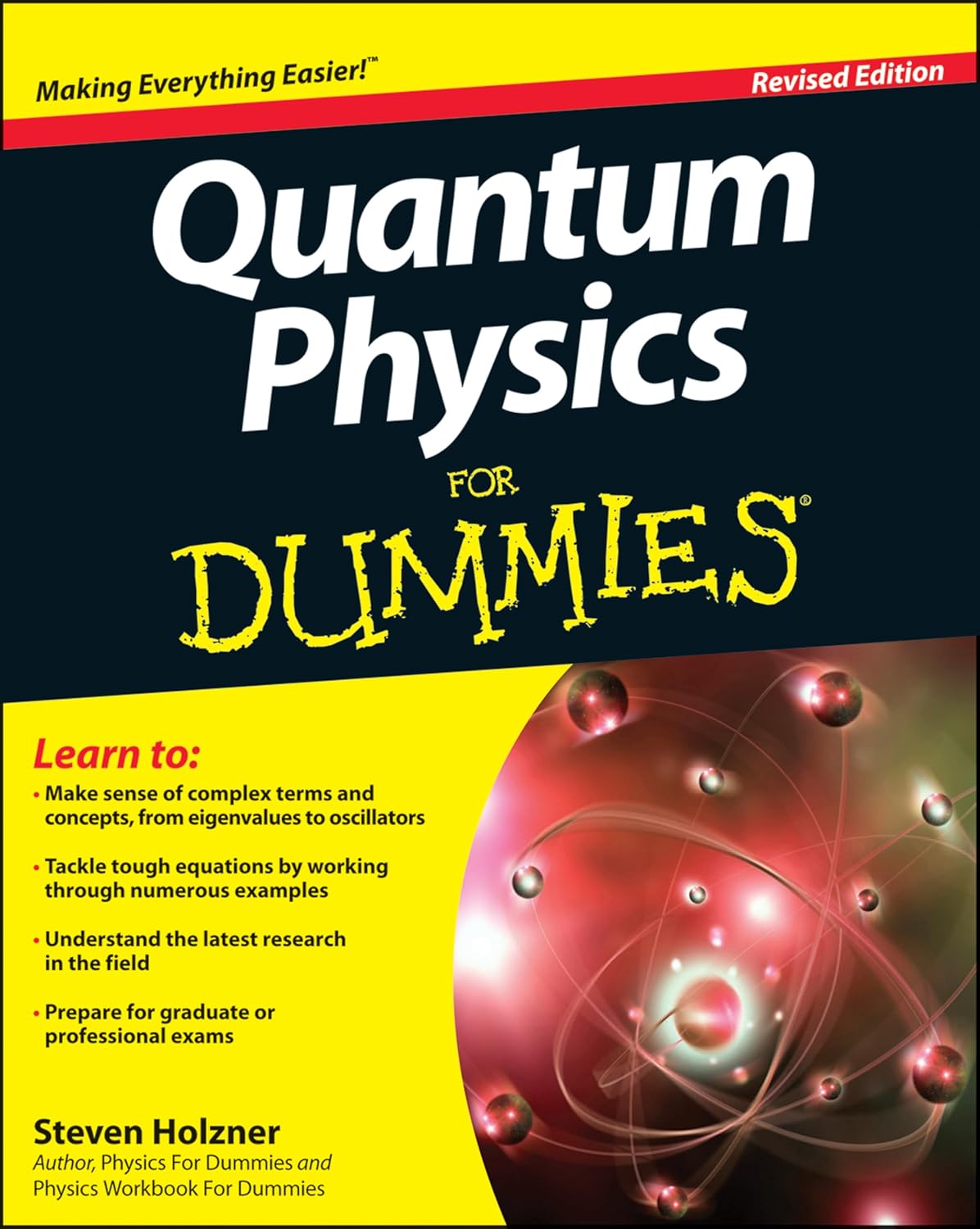About this deal
Every particle, atom and molecule [photons, electrons or whole atoms] behave in accordance with the laws of quantum mechanics – as does everything. However, this only becomes important when broken down to the atomic, sub-atomic and molecular scales. Quantum mechanics is trying to use the physics of things at the atomic level to create effects in the macroscopic world – which is our world. What is superposition? In 1933, Walther Meissner discovered that in a superconductor that has been cooled down as much as possible, the magnetic field will be expelled. This phenomenon has been dubbed the Meissner effect. If a regular magnet is placed on aluminum (or any other superconductor) that is then cooled using liquid nitrogen, the magnet will levitate and hang in the air, as it will “see” its own magnetic field of the same polarity expelled from the cooled aluminum, and the same sides of magnets repel each other. 4. Superfluidity
Quantum Physics For Dummies - Booktopia Quantum Physics For Dummies - Booktopia
So now we need to see if it will work, so first we take our wave (1) and differentiate it twice with respect to (If you are unsure how to do this see here for help). So differentiating twice gives. Knowledge of quantum principles transformed our conceptualization of the atom, which consists of a nucleus surrounded by electrons. Early models depicted electrons as particles that orbited the nucleus, much like the way satellites orbit Earth. Modern quantum physics instead understands electrons as being distributed within orbitals, mathematical descriptions that represent the probability of the electrons' existence in more than one location within a given range at any given time. Electrons can jump from one orbital to another as they gain or lose energy, but they cannot be found between orbitals. Now, you divide by , you get rid of the one on the left as that differential doesn’t depend on , and if you divide through by you get rid of the on the right as that differentiation doesn’t depend on . So you getIn 1938, Pyotr Kapitsa cooled liquid helium to a near-zero temperature and discovered that the substance had lost its viscosity. The phenomenon was dubbed “superfluidity.” If you pour liquid helium into a glass, it will still creep up along the sides and drip out of it. In fact, as long as the helium is sufficiently cold, there are no limits to it creeping up and dripping out, regardless of the shape and size of the glass. At the close of the 20th century and beginning of the 21st, superfluidity was also discovered in hydrogen and various gases. 5. Quantum tunneling One unnerving consequence of this fact is that, until a measurement is made, the particle essentially exists in all positions! This paradox was put forward famously in the form of the Schrödinger’s cat in the box thought experiment. Schrödinger’s Cat in a Box
Quantum Physics | Physics library | Science | Khan Academy
Because many of the concepts of quantum physics are difficult if not impossible for us to visualize, mathematics is essential to the field. Equations are used to describe or help predict quantum objects and phenomena in ways that are more exact than what our imaginations can conjure.First thing we do is assume that the can be split into two functions, one that only depends on and one that only depends on , like so as our new wave equation. We have now changed to as this will be the equation that works and is the common symbol used for quantum mechanical waves, the equation for is the same as for . So if we now do the differentiation In most cases you’ll learn about involving matter waves like electrons, the potentials they’re in don’t really depend on time, they don’t suddenly change shape after so many seconds. If this is the case (and most of the time it is) then we can use the Separation of Variables method on the Schrödinger Equation.
How to Understand Quantum Physics: 14 Steps (with Pictures)
Consider first a machine gun that fires bullets to a wall. Between the wall and the machine gun, another wall has two parallel slits that are big enough to easily allow a bullet to pass through them. To make the experiment interesting, we take a “bad” machine gun that has a lot of spread. This means it sometimes shoots through the first slit and sometimes through the second, and sometimes it hits the intermediate wall. Thanks to a 1927 discovery, thousands of scientists and students have repeated one and the same simple experiment by shining a laser through a hole that gradually becomes smaller. Logically, the visible laser point on the projection screen shrinks as the hole contracts. But when the hole becomes narrow enough, the laser point suddenly widens and expands across the screen until the hole closes. This is the clearest proof of the quintessence of quantum physics – the Heisenberg uncertainty principle, which states: The more precisely we define one of a pair of properties in a quantum system, the more uncertain the other property becomes. In this case, the more precisely we define the position of the laser photons by making the hole smaller, the more uncertain their momentum becomes. 3. Meissner effect
However, storing a quantum state – i.e. particles in superposition – is very difficult. Any interaction with the universe will disrupt it and cause errors. This is why quantum computers are shielded electromagnetically and cooled down to almost absolute zero. Are quantum technologies based on a single principle?
Related:
 Great Deal
Great Deal 